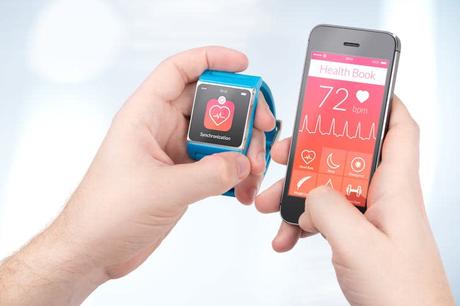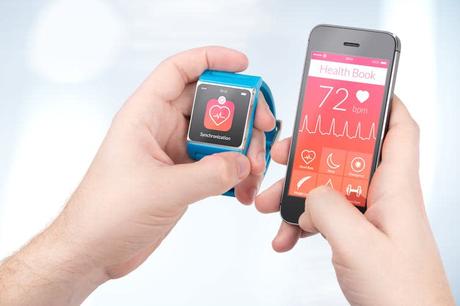A general image of a smart ring in use. Photos593 / Shutterstock " src="https://s.yimg.com/ny/api/res/1.2/fh2IxrwHQth9dTL0vseBDA-/YXBwaWQ9aGlnaGxhbmRlcjt3PTk2MDtoPTY0Mw-/https://media.zenfs.com/en/the_conversation_464/71bad3551767f7fad9f126 14daabf040″ data-src= "https://s.yimg.com/ny/api/res/1.2/fh2IxrwHQth9dTL0vseBDA-/YXBwaWQ9aGlnaGxhbmRlcjt3PTk2MDtoPTY0Mw-/https://media.zenfs.com/en/the_conversation_464/71bad3551767f7fad9f12614daab f040″/>
Samsung officially announced the launch of a new smart ring-shaped wearable device, Galaxy Ring, earlier this year as part of the Galaxy Unpacked event. The ring, expected to go on sale in late summer 2024, will be able to monitor the user's health parameters and provide insights based on perceived health metrics, which is very similar to what a smartwatch can do.
The global market for smart rings is expected to grow from $314.52 billion (£246.3 billion) in 2023 to $2,570.30 billion (£2,012 billion) by 2030. So it's no surprise that Apple is now reportedly filing patents for its request smart rings. and the product is expected to be ready in time to compete with Samsung's release.
But it may be surprising to learn that neither Samsung nor Apple are pioneers in this new wearable technology. Oura was launched in 2015 with a Kickstarter campaign for the first generation ring.
This smart ring is now in its third generation and the fourth is expected in 2024. It can measure breathing rate, heart rate, health variability (HRV), blood oxygen level and body temperature. The ring also has an accelerator that records the user's activity and movement. The most important question, however, is: is wearable technology worth it?
What is wearable technology?
Wearable devices come in many shapes and sizes, including smart and sports watches, fitness trackers, head-mounted displays, smart jewelry, smart clothing, and even implantable devices.
Technological advances have allowed manufacturers to access low-cost, low-power sensor technology and develop this variety of devices. In any case, wearable devices are equipped with sensors, software and connection technology.
The sensors collect information from the person wearing the device, and the software collects the data and sends it to a processing-capable device via a wireless connection. The ecosystem on which wearable technology operates is known as the Internet of Things (IoT). It's the same principle as smart technology used at home, on devices such as thermostats that can be controlled from a mobile device outside the home, or smart speakers, but applied on a personal level. It is important to note that mobile devices do not process the data; it is usually sent to "the cloud" for processing, and the mobile device displays the data to the user.
The story continues
What makes an IoT solution even more attractive is the interpretation of the data collected by the sensors. For example, the Oura Ring and Oura Membership allow users to monitor their sleep, manage stress and predict when they might get sick by monitoring body temperature and heart rate. This is all possible thanks to analysis of the data collected by the ring.
With advances in artificial intelligence (AI), it is expected that there will be a boost in health tracking by 2024.


Pros and cons
Smart rings come with sensors similar to those of a smartwatch. However, due to the proximity of major blood vessels in the fingers, smart rings can provide more accurate readings than smartwatches because they can use the capillaries (small blood vessels) in your finger to obtain their readings. Another advantage of smart rings is that they have a longer battery life than smartwatches. However, smart rings are unlikely to come with GPS or a screen.
In terms of price, the cheapest version of the Oura ring starts at £299 and users will have to pay a membership fee of £5.99 per month, with the first month being free. This is necessary to reap the full benefits of data analysis. However, the ring still works with the Oura mobile app. The most affordable version of the AppleWatch, the SE version, starts at £219, while the Samsung Galaxy Watch6 Bluetooth starts at £239.
Smart rings cannot and will not be able to replicate the functionality of a smartwatch. However, they represent an attractive choice for users interested in health monitoring who also want a simple device with minimalist features. Bryan Ma, the vice president of device research at International Data Corporation, said: "The idea behind such rings is not so much about the fact that they are cheaper than smartwatches, but about the fact that they are a much smaller and discreet device for use in things like sleep tracking. "
The future of wearable technology?
Wearable technology will continue to evolve, with a strong focus on health monitoring. Microsoft, for example, has been exploring smart tattoos as the next generation of wearable technology since 2016. Due to the labor-intensive manufacturing technique for gold leaf used in the tattoos, researchers are now turning to more robust, advanced and inexpensive materials.
Researchers at the University of Washington have also developed the thermal earring. This could measure the user's earlobe temperature, but it shows promise for other areas of monitoring, including eating and exercise. Although not commercially available, this device shows how engineers are developing new ideas for wearable devices.
Under Armor already sells running shoes with built-in Bluetooth and sensors that track running metrics such as distance and pace. The shoes also measure running using metrics such as cadence (steps per minute), ground contact time, foot strike angle and stride length.
The app offers real-time audio coaching, but focuses only on cadence. In the future, we can expect advancements in smart contact lenses, smart nails, smart buttons and much more.
Is wearable technology worth it?
The expected increase in the market size of this technology shows users' interest in monitoring their health and improving their lifestyle. Developments in the Internet of Things have generally improved our way of life and supported our well-being.
Connected devices collect, track and store user data, which is the primary purpose of the technology. What users need to know is that many wearable devices share data with third-party apps and services, and it is often unclear how this data is used. The data may be sold to other companies or used for various purposes without the user's knowledge or consent. Furthermore, wearable devices can be hacked.
With this in mind, and as we have done with all new technology, users should consider the benefits of wearable technology and determine whether the risks are worth taking. If security and data privacy are an issue, users are encouraged to follow all security recommendations from experts and manufacturers to protect their devices and do more research into how their data is used and shared.
This article is republished from The Conversation under a Creative Commons license. Read the original article.


